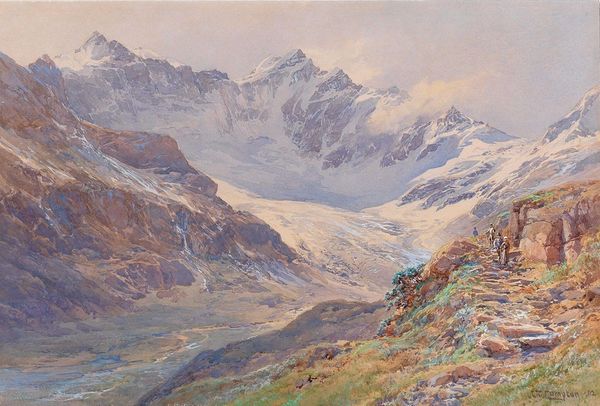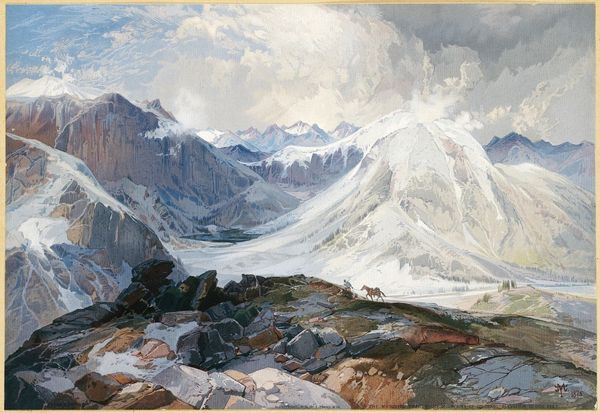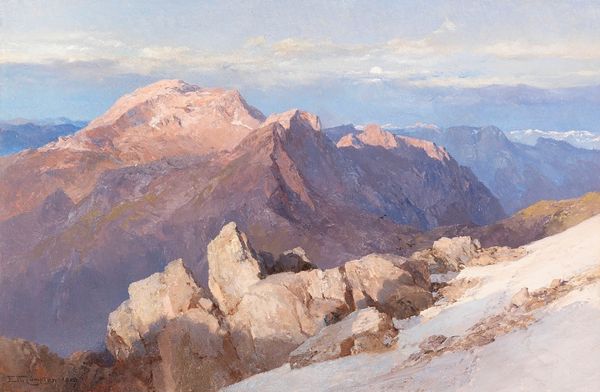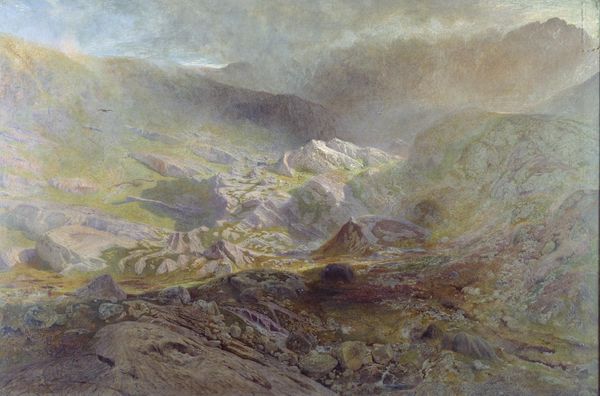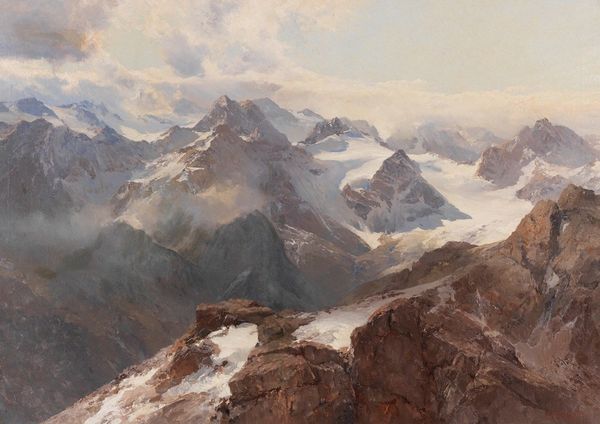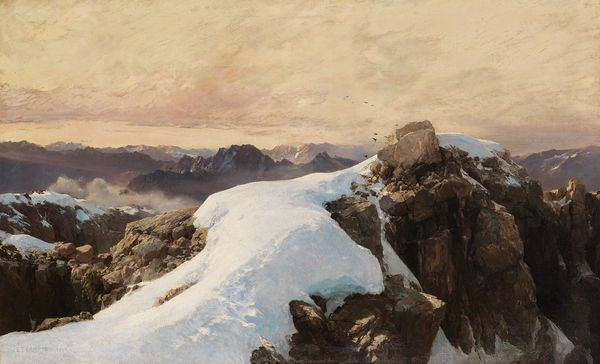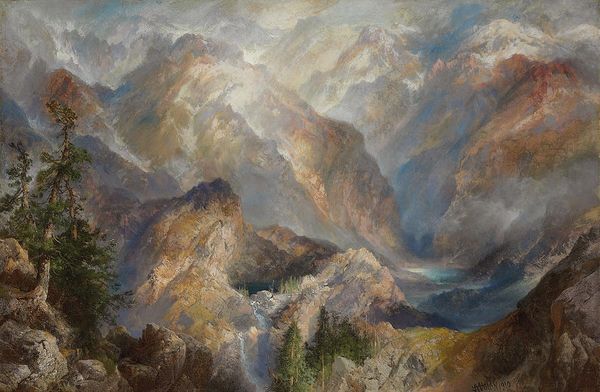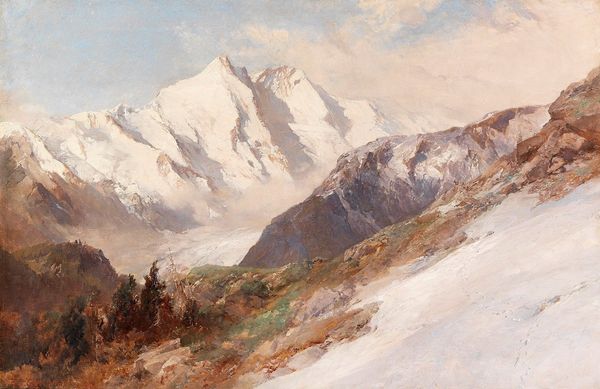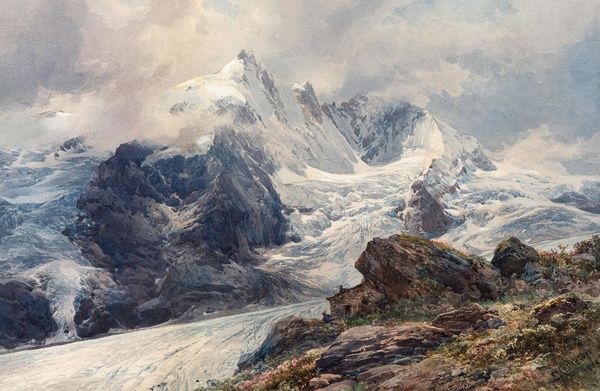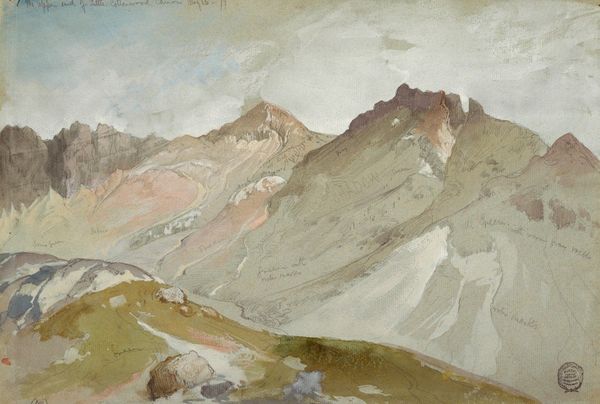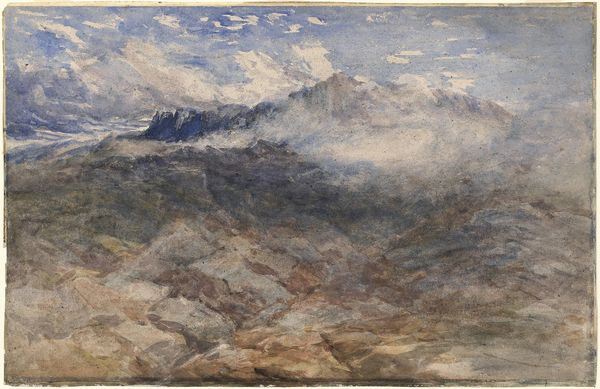
Copyright: Public Domain: Artvee
Editor: This watercolor, "Finsteraarhorn," created by Edward Theodore Compton in 1903, captures a magnificent mountain range shrouded in a misty, almost ethereal light. It has this overwhelming feeling of being small against nature. What symbolic power do you see embodied here? Curator: Immediately, I see the Romantic sublime, that emotional impact nature has on us – small figures lost against something grand, overwhelming. This glacier becomes a potent symbol. Its cool tones might evoke purity and the awe of untamed wilderness, yes? But what of its fragility? Notice how Compton captures both the imposing scale and the melting, fleeting quality of the ice. Editor: Yes, I see that now. The contrast of the rigid, almost eternal-seeming mountain peaks against the transient nature of the glacier. Is that a common symbolic element of Romantic painting? Curator: Precisely. The Romantics often grappled with themes of mortality and permanence. The glacier here serves as a visual metaphor, its existence a reminder of both the power and ephemerality inherent in the natural world. It triggers that push-and-pull within us: that sense of connection and simultaneous disconnect with our earthly reality. What lasting cultural impacts do you feel from Romantic art’s representation of landscape? Editor: Thinking about it, its lasting power seems to be how it represents our emotional relationship to the landscape. It can be grand and intimidating but also something vulnerable that is very meaningful. Curator: Precisely, and I think that contrast gives power to what Compton paints. We get the psychological impact nature can have on the viewer, both good and bad. A testament to how Romantic landscape painting helped forge a powerful dialogue between humanity and its environment.
Comments
No comments
Be the first to comment and join the conversation on the ultimate creative platform.
